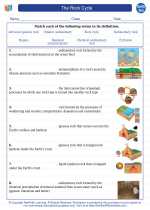Radioactive Decay
Radioactive decay is the process by which an unstable atomic nucleus loses energy by emitting ionizing particles or radiation. This process is spontaneous and occurs at a constant rate, which makes it useful for determining the age of rocks and fossils, as well as in medical imaging and treatments.
Types of Radioactive Decay
There are three main types of radioactive decay:
- Alpha Decay: In alpha decay, an unstable nucleus emits an alpha particle, which consists of two protons and two neutrons. This process reduces the atomic number of the nucleus by 2 and the mass number by 4.
- Beta Decay: Beta decay occurs when a neutron in the nucleus transforms into a proton and emits a beta particle, which can be either an electron or a positron. This process either increases or decreases the atomic number while keeping the mass number the same.
- Gamma Decay: Gamma decay involves the release of high-energy gamma photons from an excited nucleus. It does not change the atomic or mass number of the nucleus but helps the nucleus reach a lower energy state.
Half-Life
The half-life of a radioactive substance is the time it takes for half of the radioactive nuclei in a sample to undergo decay. Each radioactive isotope has a specific half-life, and this property is used to determine the age of rocks and other materials through a process called radiometric dating.
Applications of Radioactive Decay
Radioactive decay has several practical applications, including:
- Radiometric Dating: Determining the age of rocks and fossils based on the decay of radioactive isotopes.
- Medical Imaging: Using radioactive tracers to visualize internal organs and tissues in medical diagnostic procedures.
- Nuclear Power: Generating electricity through controlled nuclear fission reactions.
- Cancer Treatment: Using targeted radiation therapy to destroy cancer cells.
Study Guide for Radioactive Decay
When studying radioactive decay, it's important to understand the following key concepts:
- The basic principles of alpha, beta, and gamma decay.
- How to calculate the remaining amount of a radioactive substance after a given number of half-lives.
- The applications of radioactive decay in various fields, such as geology, medicine, and energy production.
- The potential risks and benefits associated with exposure to radioactive materials.
Additionally, practicing problems involving half-life calculations and understanding the mathematical relationships involved in radioactive decay will solidify your understanding of the topic.
For more information and practice problems, refer to your textbook, class notes, and reputable online resources.
[Radioactive Decay] Related Worksheets and Study Guides:
.◂Earth Science Worksheets and Study Guides High School. The Rock Cycle
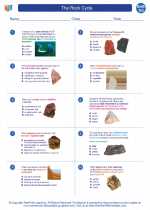
 Worksheet/Answer key
Worksheet/Answer key
 Worksheet/Answer key
Worksheet/Answer key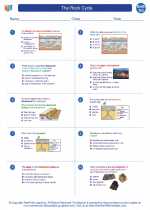
 Worksheet/Answer key
Worksheet/Answer key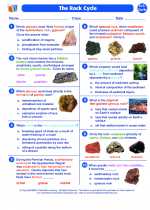
 Vocabulary/Answer key
Vocabulary/Answer key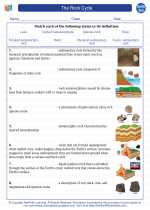
 Vocabulary/Answer key
Vocabulary/Answer key
 Vocabulary/Answer key
Vocabulary/Answer key